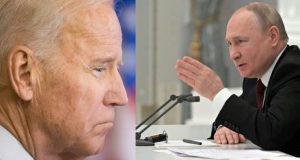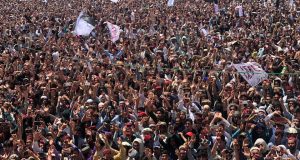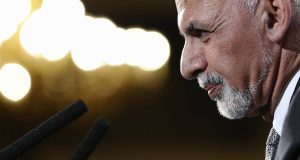
Afrasiab Khan Khattak
It has become almost a norm for Balochistan to make it to the headlines during every regional crises situation in the last so many decades.
Afghanistan was accused by Pakistan for supporting Baloch nationalist uprisings that started in 1973 after the unconstitutional dissolution of the elected provincial government of Baloch nationalists by the Zulfiqar Ali Bhutto led federal government of Pakistan at the behest of King Reza Shah of Iran.
In December 1980 the news of the Soviet invasion of Afghanistan was immediately followed by news commentaries and analysis about “Soviet designs” in Balochistan.
In 1981 Selig Harrison, the known US expert on Asian nationalist movements, wrote a book ‘In Afghanistan’s shadow: Baluch nationalism and Soviet temptations’.
Many more news and comments appeared in the press on the subject throughout the 1980s.
This line of reasoning was used as one of the main justifications for supporting an armed Afghan resistance against the Soviet invasion.
Pakistan has been blaming Afghanistan and India for supporting Baloch nationalists fighting for separation from Pakistan while the western and eastern neighbours blame Pakistan for fighting undeclared wars against them.
In fact the Narendra Modi government in India has taken a public position on supporting Baloch separatism after the deterioration of relations between the two neighboring countries.
Hostile intelligence agencies of the other states might be playing tit-for-tat games with Pakistan or following their own agendas for destabilising Pakistan.
The fact of the matter is that all is not well inside Balochistan.
Military action against the longest and most widespread Baloch nationalist insurgency (the fourth one during the last 70 years) has been going on since 2005 with some brief intervals.
There are long lists of Baloch missing persons and dead bodies dumped in the streets.
Efforts for a political solution during 2014-15 to end the bloodshed fizzled out.
As if this wasn’t enough the presence of the leadership of Afghan Taliban near Quetta, the capital of Balochistan is an open secret (Mulla Akhtar Mansoor was taken out by a US drone in 2015 in Balochistan).
Sectarian terrorists, particularly LeJ, have been busy in indiscriminate killing of Shia Hazaras in the province for the last so many years and anti-Iran militant organisations like Jandullah and Jaishul Adl have been active in the border areas leading to deepening tensions between Pakistan and Iran.
Last but not the least, Balochistan is in the news for its significance in the China Pakistan Economic Corridor (CPEC) as the proposed trade route links Gwadar seaport in Balochistan to Xinjiang in western China.
Now fast forward to the possible fall out of the current West Asian crisis for Baloch people in the region.
When Saudi-led and US and Israeli supported anti-Iran coalition talk about taking the war into Iran, they may be thinking of opening three fronts.
The first front is sectarian that implies using the Shia-Sunni divide in a predominantly Shia country where the Sunni population faces discrimination at the hands of theocratic government dominated by Shia clergy.
The second one is ethnic where alienation among non-Persian ethnic groups such as Arabs, Kurds, Baloch, Azeris, Turkamens and other minorities can be used for destabilizing Iran.
The third one is using radical opposition political groups struggling against the system of oppressive theocracy.
The last front may not be very effective because not many Iranians would be inclined to support a regime change in their own country with the help of hostile foreign countries.
Moreover Saudi monarchy and other Arab sheikhdoms are equally oppressive and anti-democratic if not more than the Islamic Republic of Iran.
So the focus is expected to remain on the sectarian and ethnic fronts that in many cases also overlap with each other.
The Baloch figure prominently as an ethnic factor in the region as like Kurds they are divided in many states and they have a history of fighting for autonomy/separation.
There is consensus among experts that the majority of Baloch people live in Balochistan province of Pakistan, although they are there in Iranian Siestan-Balochistan and western provinces of Afghanistan like Neemroz, Farah and in some other areas.
There are widespread Baloch communities in Gulf countries (many of them working in armies).
There are also small pockets of Baloch population in some Central Asian Republics.
Actually some Baloch nationalists challenge the name Persian Gulf or Arab Gulf because from Karachi to Chahbahar and beyond the coastline is mostly populated by Baloch.
So they claim that the proper name for the area would be Baloch Gulf!
If past experience is anything to go by, Saudi money is expected to go to hardcore Sunni extremists.
As pointed out earlier there are anti-Shia Sunni extremist/anti-Iran organisations active in Balochistan.
Even Jamaat-ud-Dawa (the new name of proscribed Lashkar-e-Taiba) is openly working in Balochistan for “safeguarding the country’s integrity”.
Money pouring in from Gulf countries to religious seminaries and mosques has helped the expansion of Salfism and Wahabism among the aforementioned Sunni extremists.
Unfortunately promoting religious extremism and militancy has been regarded as a “nation building “ strategy in post Zia-ul-Haq Pakistan by the military dominated Punjabi ruling elites.
This strategy is expected to weaken if not completely deconstruct ethnic and historical identities that are the basis for the demands for federalism and provincial autonomy.
Project Taliban focuses on Pashtuns.
But there are also similar strategies for Baloch and Sindhis.
The Baloch youth from the Brahvi speaking belt who are recruited in LeJ are killing Shias but they can also be unleashed on Baloch nationalists on the pattern of Taliban’s anti-Pashtun nationalist drive.
The combination of Saudi money with Pakistani “nation building” can be lethal not only for Balochistan but also for the entire region.
But then the Iranians will also not be sitting idle.
They are capable of reaching out to Baloch separatists on the Pakistani side and they will not be alone in it.
India is already publicly committed to support Baloch separatism.
An antagonizsed Afghanistan can team up with them.
With the induction of so many players Balochistan, which is already bleeding, can become a hell.
The ensuing bloodshed can take Baloch, a comparatively small population, to the verge of extinction.
But what will be the future of CPEC in such a situation? Will Pakistan only depend on the policy of “ shooting our way through” ( as she did in East Pakistan) or adopt some political sophistication for finding political solutions? PM Nawaz Sharif has simply forgotten the promise he made on December 24, 2014 for convening an APC on Balochistan.
But at the moment he is in survival mode and has no time for devising national political strategies.
riter: Afrasiab Khan Khattak
 Pashtun Times Latest News
Pashtun Times Latest News



